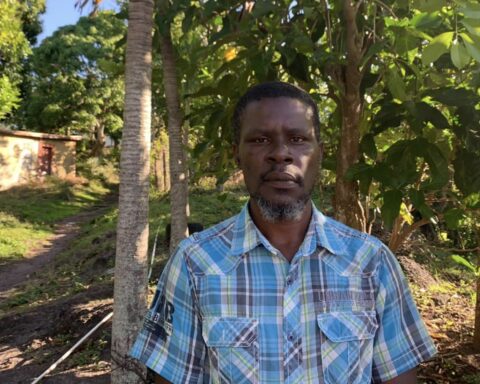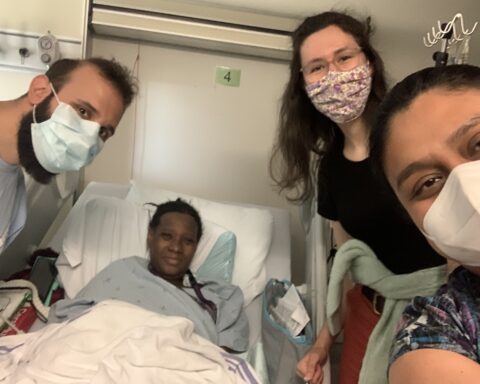As a signatory of the Universal Declaration of Human Rights, Canada acknowledges the right to adequate health care for all. However, uninsured individuals living in Canada still face barriers that limit their access to appropriate care.
According to Health For All, anywhere from 200,000 to 500,000 people are living without health insurance in Canada.
The reasons for the lack are diverse, including precarious immigration status, lost documents, and refused refugee claims. Also, Quebec, British Columbia, and Ontario have a three-month waiting period before newcomers get health insurance, while other provinces do not.
“This creates inequities in the access and the type of health care people receive across the country,” says Steve Barnes, director of policy of the Wellesley Institute.
Health-care options
Barnes explains that uninsured people in Canada have four main health-care options: community health centres, clinics and grassroots initiatives, hospitals receiving patients without insurance, and midwives.
Community health centres (CHCs)
CHCs – publicly funded health-care facilities currently located in all Canadian provinces and territories – are an option for people both with and without health insurance.
Since the cuts to the Interim Federal Health Program in 2012, many people have lost access to insurance.
Scott A. Wolfe, executive director of the Canadian Association of Community Health Centres, explains that the programs at each CHC vary because they respond to the priorities of the community.
“What unifies CHCs is that they offer a team-based approach to frontline health care that wraps services around the individual’s needs so that people get the right type of care from the right providers at the right time,” he says.
In this way, CHCs take a holistic approach to health based on the collaboration of different health practitioners, such as physicians, nurses, and therapists.
Patricia Dabiri, manager of the Multicultural Family Centre at REACH, explains that another characteristic of CHCs is that they also focus on the social and environmental factors related to health and well-being. “For this reason, CHCs have a greater range of services than other health-care institutions,” she says.
Wolfe explains that the 800 CHCs that currently exist in Canada have different services and programs focusing on removing barriers to access the health system, building better community capacity and improving individuals’ overall health and wellness.
He adds that since the cuts to the Interim Federal Health Program (IFHP) in 2012, many people have lost access to insurance, and CHCs are working to fill that gap.
“A major wave of people has presented at CHCs because they have been turned away from other institutions. CHCs do not always have the capacity or the funding to absorb this challenge,” Wolfe says.
Clinics and grassroots initiatives
Clinics for non-insured patients and grassroots initiatives are another option.
Byron Cruz co-funded the grassroots initiative Sanctuary Health in 2012 as a response to the IFHP cuts. “We started as a network to advocate for health care,” he says. Now they serve populations with a vulnerable immigration status through a network of health practitioners who volunteer to treat them.
The Health Network on Uninsured Clients, convened by the Wellesley Institute, is another network of collaboration among professionals addressing health for uninsured populations.
Clinics for uninsured clients are an option too. There are a variety across the country, such as the Non-Insured Walk-In Clinic (NIWIC) and the Canadian Centre for Refugee and Immigrant Health Care (CCRIHC). They offer medical treatment, support, and translation services, among others.
Hospitals
Cruz explains that sometimes people can only be treated in hospitals, and some across Canada treat uninsured patients. However, “because of the changes in immigration laws, there is confusion among health-care providers, and usually people are denied care even if they qualify for it,” he says.
Cruz also notes that the uninsured cannot always afford the costs. “Even if people eventually access primary care, they can rarely pay for treatment, laboratory tests, or medicines.” Wolfe draws attention to the need of finding alternatives, such as a national drug coverage program, to reduce these costs.
Midwives
Manavi Handa, a midwife and activist focusing on health care for marginalized populations, explains that uninsured pregnant women are particularly vulnerable because they cannot bridge from care.
People who do not access appropriate primary care may end up at the emergency department, where care cannot be denied.
Midwives are an option because their services are less expensive than that of other health professionals. Uninsured women in Ontario can access their services without cost because midwives in this province are publicly funded to provide care regardless of immigration or insurance status.
However, Handa says that there are some barriers. “For example, midwives are often at capacity. Also, newcomers may be unaware of their services.” For this reason, Handa coordinates a group of midwives through NIWIC to connect uninsured pregnant women with appropriate care.
Public sexual-health clinics are another option for uninsured women. Among other services, these offer assessments for contraceptive methods, tests, and counselling.
A combined effort
“The way in which we exclude some populations from health care is not benefitting anyone,” says Barnes. He explains that people who do not access appropriate primary care may end up at the emergency department, where care cannot be denied.
“The diseases patients present at that point are usually serious and expensive to treat, but could have been prevented if addressed on time.”
He concludes: “We need to combine our efforts to provide services, advocate, and promote changes in the institutions’ policies and the political system to continue improving the health of uninsured residents and of the Canadian population as a whole.”
While across Canada there are organizations that provide new immigrants with information about the Canadian health-care system, there is a growing number of newcomers who still don’t know about these resources. As such, this is the first of an occasional series by NewCanadianMedia.ca that will look into access to health care for immigrants.
Belen Febres is a Phd Candidate at Simon Fraser University with a focus on Community Media and Health Communication. Belen collaborates with historically silenced communities and communication initiatives to co-create spaces for self-representation and social change.





